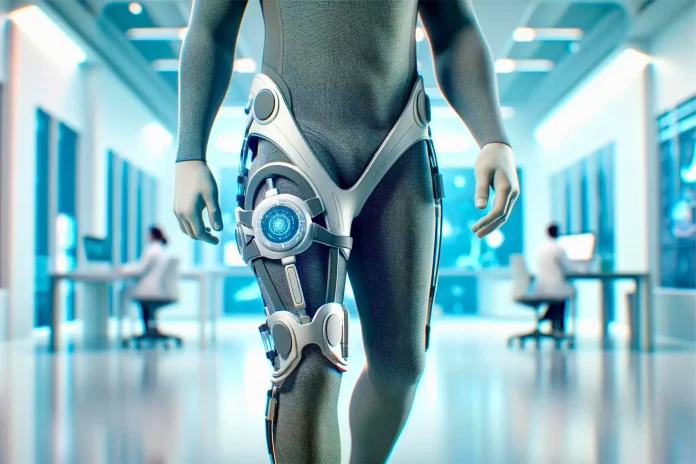Wearable robotics are here to revolutionize medicine and bring forth more inventions to ease the lives of Parkinson’s and Alzheimer’s. Parkinson’s disease, a neurodegenerative disorder affecting over 9 million people worldwide, presents a multitude of challenges for those living with it. One particularly weakening symptom is freezing, a sudden and involuntary halt in movement, often happening mid-stride while walking. This can lead to falls, decreased independence, and significantly impacted quality of life. But a new shimmer of hope has emerged in the form of wearable robotic devices, offering the potential to break free from the hands of freezing and empower individuals with Parkinson’s to reclaim their control of life and mobility.
Understanding Freezing
Before getting into the technological wonder, let’s first understand what freezing is and how it affects us. Freezing in Parkinson’s is caused by a disruption in the brain’s basal ganglia, the region responsible for initiating and coordinating movements. This disruption leads to a sudden lack of dopamine, an important neurotransmitter for smooth, coordinated movement. As a result, the brain struggles to send signals to the muscles, causing the characteristic “freezing” phenomenon.
Enter the Robotic Exoskeleton
Now, let’s talk about this technological marvel that is here to improve lives. Imagine a lightweight, flexible suit made of soft, breathable materials that gently hugs your body. This is the essence of a robotic exoskeleton, designed to work in coordination with your own movements. Embedded sensors continuously monitor your steps and activity, detecting subtle changes that might precede a freezing episode.
When the system anticipates a freeze, it kicks into action. Tiny motors or pneumatic actuators strategically placed at key joints, like the hips and ankles, deliver subtle but timely nudges or assists. These precisely timed interventions help initiate the next step, breaking the freezing cycle and allowing you to continue walking smoothly.
Wearable Robotics Helpful Just for Walking?
The potential of these wearable robotics companions extends beyond just walking. Some devices incorporate additional features like tremor suppression, aiding in eating, writing, and dressing tasks. Studies are also exploring the use of these robots for improving balance and posture and even promoting speech in Parkinson’s patients. These evolutionary devices are helping each individual to have a better life with enhanced capabilities.
Future of Wearable Robotics
The field of wearable robotics for Parkinson’s is rapidly evolving with new advanced research and exciting inventions on the horizon. Researchers are continuously refining the algorithms that control these devices, making them more responsive and personalized to individual needs. Integrating artificial intelligence and machine learning holds immense promise for creating truly adaptive systems that learn and anticipate each user’s unique movement patterns.
Challenges and Considerations
While the future seems bright for wearable robotics, challenges are still present for the promotion and development of these products. Cost and accessibility are major hurdles, as these devices are still in their early stages of development and commercialization. Additionally, factors like comfort, battery life, and ease of use require further refinement by their manufacturers.
The ethical considerations surrounding the use of such technology also need careful consideration. Issues like patient autonomy, dependence on technology, and potential side effects must be addressed with open dialogue and ethical frameworks.
A Ray of Hope for all
Despite the challenges, the potential of wearable robotics devices to improve the lives of people with Parkinson’s is undeniable. These technological advancements offer a ray of hope for them to regain lost mobility, independence, and, ultimately, a better quality of life. As research and development continue, we can envision a future where freezing becomes a memory of the past, replaced by a world where individuals with Parkinson’s walk with confidence and hope, one step at a time.



